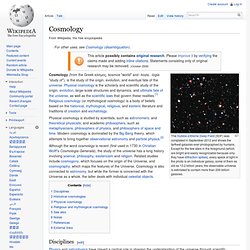

The Gravity of the Situation: UFOs, Mercury and Antigravitic Forces. Could ancient civilizations have harnessed the power of the atom?

What about advanced aircraft capable of out-maneuvering our best jet-propelled planes? What if this civilization existed thousands of years ago? It doesn’t really sound possible, does it? But the truth is that, while we can’t be certain that any such civilization did ever exist, there are a startling number of references in documents dating back to ancient times, as well as the occasional appearance of artifacts that seem chronologically “out of place,” pointing to far more advanced engineering concepts that may have existed in our prehistory than most are willing to consider. For instance, when one begins to look at some of the passages contained within the ancient Vedic epics of India, there are a number of rather odd things that tend to appear, especially for those of us interested in UFOs and anti-gravity. Perhaps so… although it is interesting nonetheless that in addition to the Nazis, scientists ranging from J. The family. Magia sexualis: sex, magic, and ...
Randolph_magia_sexualis.pdf (application/pdf Object) Lunar geologic timescale. The lunar geological timescale (or selenological timescale) divides the history of Earth's Moon into five generally recognized periods: the Copernican, Eratosthenian, Imbrian (Late and Early epochs), Nectarian, and Pre-Nectarian.

The boundaries of this time scale are related to large impact events that have modified the lunar surface, changes in crater form that occur through time, and the size-frequency distribution of craters superposed on geological units. The absolute ages for these periods have been constrained by radiometric dating of samples obtained from the lunar surface. However, there is still much debate concerning the ages of certain key events, because correlating lunar regolith samples with geological units on the Moon is difficult, and most lunar radiometric ages have been highly affected by an intense history of bombardment.
Lunar stratigraphy[edit] Millions of years before present Pre-Nectarian[edit] Kuiper belt. The Kuiper belt is distinct from the theoretical Oort cloud, which is a thousand times more distant and is mostly spherical.

The objects within the Kuiper belt, together with the members of the scattered disc and any potential Hills cloud or Oort cloud objects, are collectively referred to as trans-Neptunian objects (TNOs).[12] Pluto is the largest and most massive member of the Kuiper belt, and the largest and the second-most-massive known TNO, surpassed only by Eris in the scattered disc. [nb 1] Originally considered a planet, Pluto's status as part of the Kuiper belt caused it to be reclassified as a dwarf planet in 2006. It is compositionally similar to many other objects of the Kuiper belt and its orbital period is characteristic of a class of KBOs, known as "plutinos", that share the same 2:3 resonance with Neptune.
History[edit] After the discovery of Pluto in 1930, many speculated that it might not be alone. Hypotheses[edit] Discovery[edit] Name[edit] Structure[edit] Resonances[edit] Cosmology. The Hubble eXtreme Deep Field (XDF) was completed in September 2012 and shows the farthest galaxies ever photographed by humans.

Except for the few stars in the foreground (which are bright and easily recognizable because only they have diffraction spikes), every speck of light in the photo is an individual galaxy, some of them as old as 13.2 billion years; the observable universe is estimated to contain more than 200 billion galaxies. Iron Man 2's Secret Sauce: 3-D Printing.
Iron Man 2 opens today! Are you excited? Really? Huh. Well, keep reading anyway. You know someone's gonna drag you into a showing. On screen, with all those suits whirling into place, you'd probably assume that the "costumes" are merely virtual. The "Eden" printers, which are made by Objet, work by using an inkjet cartridge to print a layer of powdered plastic, which is then fused with UV light. The product emerges completely finished. In addition to speed, the benefit is that you can print out costumes custom fitted to the actors, down to the millimeter. Maybe the best example are the gloves that Downey wore--which were no thicker than a dime, and could be worn for hours without getting so hot that the dude needed some Colombian Marching Powder to take the edge off: